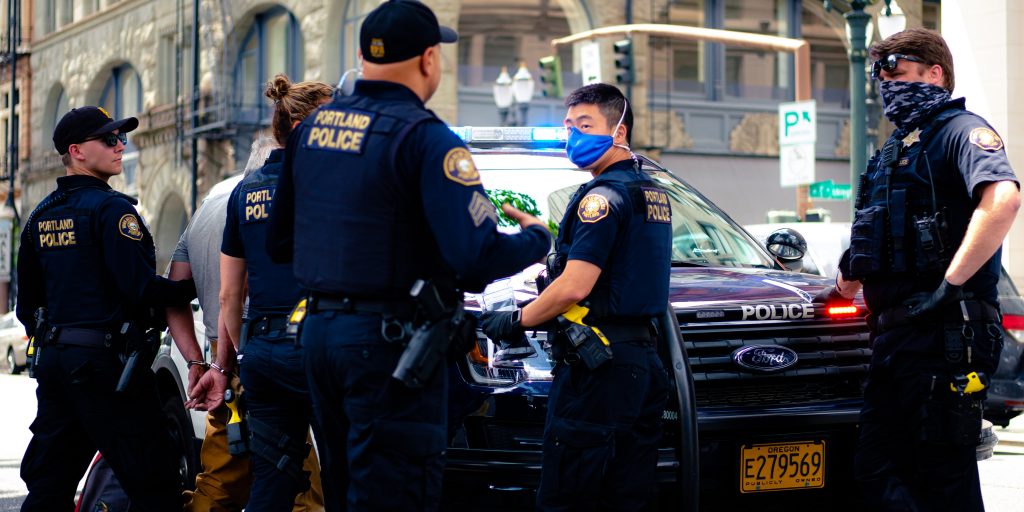Global pandemic ignites new era of public safety innovation
History shows that times of crisis and disruption are often the driving force behind technological innovation and growth. Nowhere is this more evident than in public safety, where those on the frontlines in law enforcement and emergency response need to adapt quickly to meet the safety and security needs of the communities they serve.
One need not look back more than a few decades for examples. Consider the horrific massacre at Columbine High School in 1999, which led police departments to reassess response tactics and has driven the implementation of “panic buttons” and other technologies connecting schools and first responders. Hurricane Katrina in 2005 exposed limitations in Louisiana’s communications systems and led to investment in a radio system capable of withstanding hurricane force winds and flooding. Just last year, the murder of George Floyd laid bare the need for video to record encounters between law enforcement and the public and sparked the accelerated deployment of body-worn cameras.
The recent COVID-19 pandemic is no exception. Motorola Solutions recently engaged Goldsmiths, University of London for a first-of-its-kind global research study to better understand how public safety agencies around the world adapted to overcome new challenges and threats. The study, which included a survey of 12,000 citizens and interviews with more than 50 public safety agencies and experts in 10 markets across the globe, found ample evidence of innovation, and stories have emerged from across the United States.
The Department of Emergency Communications in Alexandria, Va., adopted a mobile call-handling solution. It looks and operates exactly like the call-handling system at the public safety answering point, so staff have not needed to learn a new system. The success of the mobile solution has prompted interest from other agencies that want to make remote work feasible to weather the pandemic, but also as a component of their broader disaster preparedness planning for scenarios which include severe storms, hurricanes and wildfires. Other agencies have taken a different approach and moved key features of their command center software to the cloud to enable some components of their workflows to be managed remotely.
Boston Police Department (BPD), like many agencies across the country, faced similar challenges—requirements that staff stay physically distant from one another and that support staff work remotely. Many BPD team members live outside the city and coverage area of the land mobile radio (LMR) network, on which the department relies for mission-critical communications. The department was able to roll out a broadband push-to-talk service in a matter of days to extend group communications beyond the radio coverage area and to non-radio users. Once connected to the LMR network, staff could monitor radio communications in the city from their homes to ensure the department could continue to communicate and collaborate. The BPD plans to use the service post-pandemic to enhance communications across the department.
Los Angeles Airport Police, which employs more than 1,100 law enforcement and civilian personnel with a mission of ensuring safe and secure operations at the world’s third busiest airport, relies heavily on technology to gather and store data that informs incident response. The department was able to leverage an upgraded in-house CAD system with integrated records management to unify key information from different sources, including 911, the LMR system, video cameras and data resources to streamline the capture, correlation and distribution of information. The centralization of data allowed L.A. Airport Police to proactively assess threats and respond more quickly and efficiently with the appropriate resources, which has been paramount to the department’s pandemic response.
From video security solutions for greater awareness of events as they unfold, to the adoption of cloud-based technologies for decentralized operations to the expansion of critical voice and data communications for greater collaboration, the examples of pandemic-driven innovation are numerous. The societal impacts of COVID-19 will be felt for decades, but if history has taught us anything, so too will the technological advancements that have emerged, positioning our public safety agencies to be better prepared for the events of the future.
Paul Steinberg is senior vice president of technology at Motorola Solutions, responsible for technology policy, standards and strategic technical projects. He also serves on the executive board of the Telecommunications Industry Association and is a member of the Federal Communications Commission’s Technical Advisory Council and Communication Security, Reliability and Interoperability Council.




















